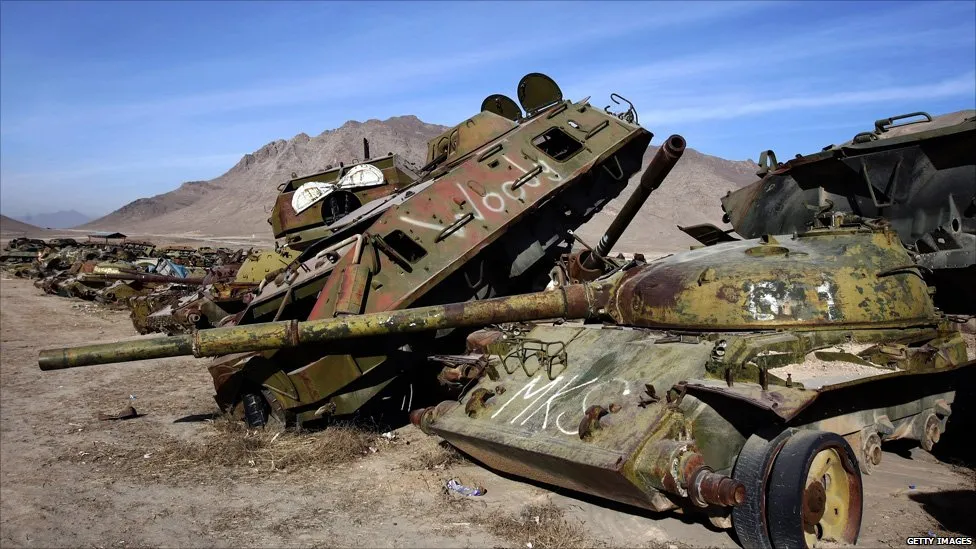Whatever happened to Afghanistan… again? Remember when Afghanistan dominated the headlines, a whole 20 years ago. Then it made its Elvis-like comeback — only to flash and fade again from the Western media consciousness. If Vietnam was the “television war”, Afghanistan was the war television forgot — twice.
The Western media was only too willing to “do its bit”, back in 2001, when it came to drumming up hysteria for invasion. For a while the Taliban (boo!) and “Afghan women’s rights” were splashed on every channel, every paper. Then, it was all replaced by Weapons of Mass Destruction and the slightly-less fictional The Osbournes. Even as tens of thousands of troops and trillions of dollars were poured into Afghanistan, the media yawned and looked elsewhere.
And so it continued, for the next 20 years.
This all appeared to change last August — at least for a time. As the United States began withdrawing from Afghanistan in earnest, the media reacquainted the American public with the twenty-year-old war using the kind of “winners and losers” punditry that elevates soundbites over nuance.
Soon, a hysterical press corps was heaping condemnation on President Joe Biden for exiting a war that the American public had wanted out of for some time. The withdrawal became about “Biden’s Saigon” and American weakness, not actual accountability or how the Afghanistan Papers had already revealed the war to be a farce.
That last is true — and it only confirmed what many people had been saying all along. How, after all, did we go from “Mission Accomplished”, to “building a liberal democracy” in a nation which has solidly demonstrated its commitment to being a mediaeval theocracy, for the last couple of centuries?
But it’s still pertinent to talk of “‘Biden’s Saigon’ and American weakness”. Instead of Donald Trump’s staged withdrawal, with confirmatory steps along the way, Biden simply cut and ran. The Taliban, no doubt to their complete surprise, inherited not just the capital, completely unfought for, but an astonishing trove of American taxpayer-funded arms.
Then, just as quickly as it started, the coverage vanished. While this was somewhat expected following the US departure, the media’s readiness to wash its hands of the whole affair after weeks of emotive appeals to stay the course was particularly jarring.
Take the plight of Afghan women, for example. The Taliban’s reconquest rightly raised concerns that women would face renewed repression under their regime. However, as Cheryl Benard and others have observed, the notion that the United States had “abandoned” Afghan women was duplicitous, for the West’s conception of an “Afghan women” was incomplete. With reporters sticking mostly to the cities — which were safer than the war-torn countryside — the media presented a constructed version of what an Afghan woman truly was: an elite human rights lawyer or an educator who had embraced Western modernity.
It might be worth pondering Afghan men, as well. As they have for the last few centuries, Afghans spent the last 20 years violently demonstrating their utter resistance to modernity as well as outside invaders. At some point, even the most committed human rights nobbler surely has to give up trying to “help” people who clearly don’t want to be helped.
So, whatever happened to Afghanistan after the Western media lost interest with its usual alacrity?
Even as the US military was retreating from a capital city that a bewildered Taliban had effortlessly conquered, the Biden administration was holstering its military weapon and drawing its economic one […]
American sanctions and asset freezes sent the Afghan economy into free fall. Banks closed, salaries went unpaid, and inflation and unemployment soared just in time for winter, raising fears of imminent famine. In September, the United Nations warned that one million children were at immediate risk of starvation. By December, that number had exploded: 23 million Afghans (55 percent of the population), including 14 million children, were facing “extreme levels of hunger.” Parents began selling off their girls to feed their emaciated families. So much for caring about Afghan women […]
Moreover, Biden’s February decision to redistribute $7 billion of Afghanistan’s frozen assets between a humanitarian trust fund and payouts to relatives of victims of 9/11 is […] more theft than policymaking.
Spectator Australia
Eh, who cares? The Western media have another bogeyman to beat up. Vladimir Putin is the new Saddam, is the new Taliban, is the new Evil Empire. There’s always another spectre to frighten the masses with, after all.
Meanwhile, the people of Ukraine might want to ask the women of Afghanistan just how long “I Stand With…” lasts, these days. They’re only a new Facebook badge away from being relegated somewhere below the Kardashians.









